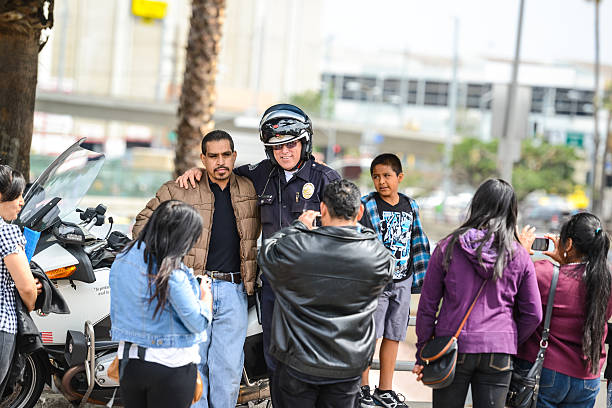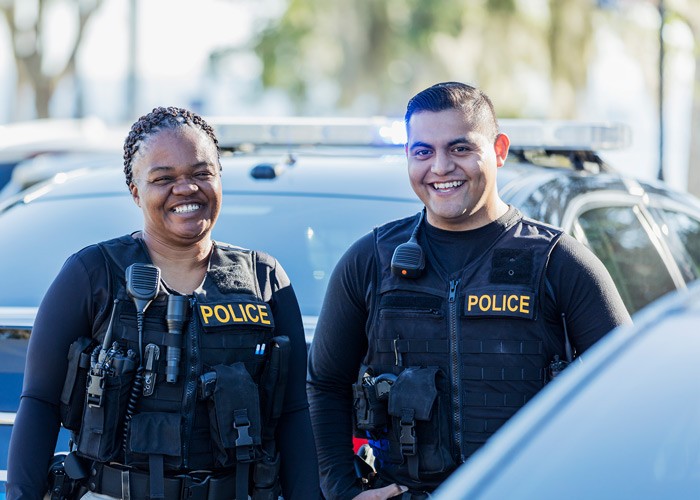Community policing is a proactive approach to law enforcement that involves the police and the community working together to identify and solve problems. This approach focuses on building relationships, increasing trust, and improving communication between police officers and community members. By working together, the police and the community can create safer neighborhoods and reduce crime.
Community policing strategies involve a variety of tactics that are tailored to the specific needs of each community. Some of these tactics include:
1. Neighborhood Watch Programs
Neighborhood watch programs are designed to involve residents in the process of preventing crime. These programs encourage neighbors to look out for one another and report suspicious activity to the police. By working together, residents can help to deter criminals and create a safer environment for everyone.
2. Foot Patrols
Foot patrols involve police officers walking through neighborhoods and interacting with residents. This tactic helps to build relationships and trust between the police and the community. Foot patrols also allow police officers to identify potential problems and address them before they become more serious.
3. Community Policing Centers
Community policing centers are physical locations where residents can go to interact with police officers and receive assistance with a variety of issues. These centers provide a space for police officers to build relationships with community members and offer services such as crime prevention tips and referrals to social services.
4. Problem-Oriented Policing
Problem-oriented policing involves identifying specific problems in a community and developing targeted solutions to address those problems. For example, if a neighborhood is experiencing a high rate of car thefts, police officers may work with residents to develop strategies for preventing car thefts, such as improving lighting or increasing police patrols.
5. Youth Outreach Programs
Youth outreach programs are designed to engage young people in positive activities and prevent them from becoming involved in crime. These programs may involve sports teams, mentoring programs, or after-school activities. By providing young people with positive role models and opportunities, we can reduce the likelihood that they will become involved in criminal activity.
The Benefits of Community Policing
Community policing has a number of benefits for both the police and the community. Some of these benefits include:
1. Increased Trust and Communication
Community policing helps to build trust and improve communication between the police and the community. By working together, residents and police officers can develop a better understanding of each other’s needs and concerns.
2. Improved Crime Prevention
Community policing strategies are designed to prevent crime before it happens. By identifying potential problems and addressing them proactively, we can reduce crime rates and make our neighborhoods safer.
3. Reduced Police Brutality
Community policing encourages police officers to build relationships with community members and use non-violent tactics to resolve conflicts. This can help to reduce incidents of police brutality and improve police-community relations.
4. Increased Public Safety
By working together, the police and the community can create a safer environment for everyone. Community policing strategies have been shown to reduce crime rates and increase public safety in neighborhoods across the country.
5. Enhanced Quality of Life
Community policing can improve the quality of life for residents by reducing crime and creating a sense of community. By working together, we can create neighborhoods that are safe, welcoming, and supportive.
6. Community Surveys
Conducting community surveys is an essential component of community policing strategies as it enables police departments to gather feedback from community members about their perceptions of crime and safety in their neighborhoods. The information collected through community surveys helps police departments tailor their policing strategies to address the specific concerns and needs of the community, leading to increased community trust and collaboration between law enforcement and community members. Community surveys also allow police departments to measure the effectiveness of their community policing efforts and identify areas for improvement. By including community surveys as a part of their community policing strategies, police departments can ensure that their policing efforts are community-driven, responsive, and effective in promoting safety and well-being for all members of the community.
Conclusion
Community policing is an effective approach to law enforcement that involves the police and the community working together to identify and solve problems. By building relationships, increasing trust, and improving communication, we can create safer neighborhoods and reduce crime. If you are interested in getting involved in community policing, contact your local police department to learn more about the programs and services that are available in your community.





